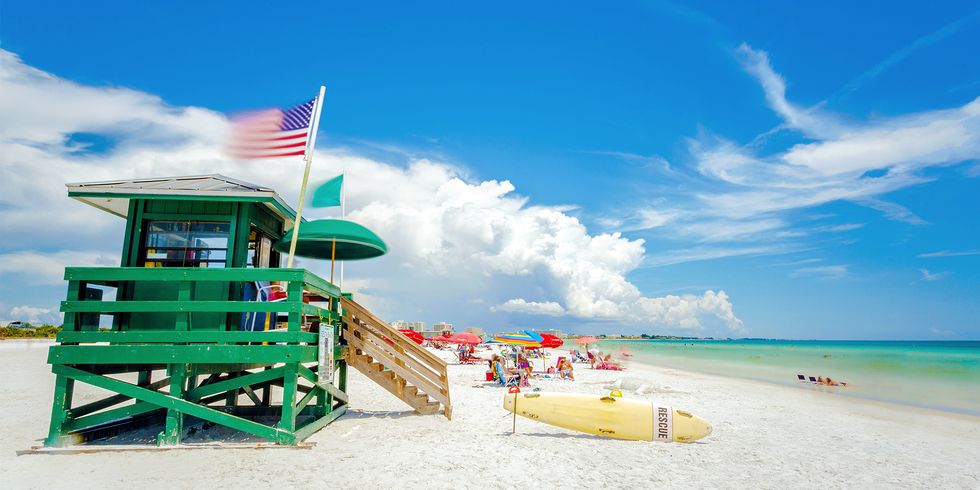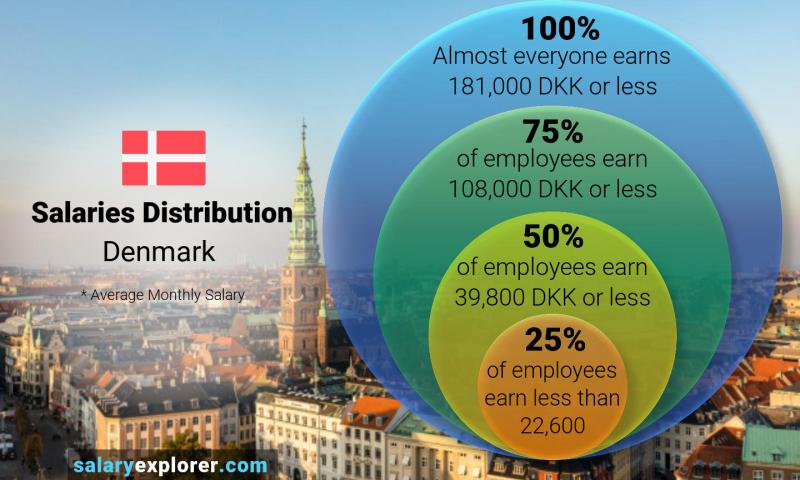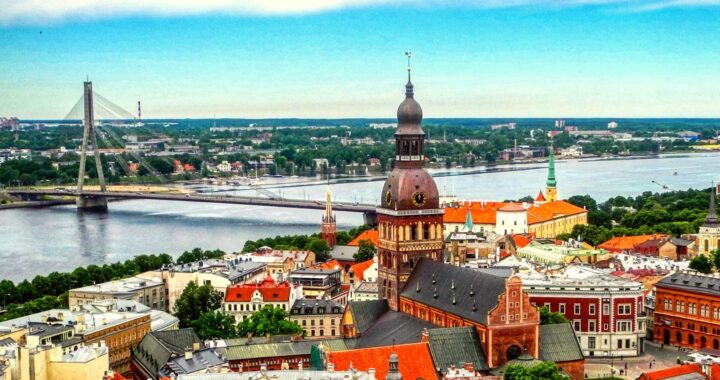Denmark as Immigration Destination- What are the settlement Prospects and Immigration Processing times?

Immigration to Denmark
Denmark one of the finest Country in Europe with Pleasant Atmosphere
Denmark is a northern European country. It is made primarily of the Jutland Peninsula and around 400 North Sea islands. To the south, it shares a border with Germany. The government is nearly twice as big as Massachusetts.
The landscape in Denmark is primarily flat, with some gently undulating hills. Glaciers swept slowly across the landmass throughout the Ice Age, shaping the country as we know it today. Denmark’s coastline is long and winding, with numerous lagoons, gulfs, and inlets. The sea is never more than 32 miles (67 kilometers) away from any portion of Denmark.
Despite its location in northern Europe, Denmark has a pleasant climate due to the Gulf Stream’s warm waters.
Denmark’s economy- High Per Capita Income makes it one of the best Immigration Destination
Denmark has a high living level, with one of the world’s most excellent per capita gross national products and well-developed social services. The economy is mainly centered on service sectors, commerce, and manufacturing; agriculture and fishing employ just a tiny portion of the population. Small businesses are the most common.
Denmark became the first of the Nordic countries (Denmark, Finland, Iceland, Norway, and Sweden) to join the European Economic Community (EEC; later replaced by the European Union [EU]) in 1973, at the same time as the United Kingdom, its most important economic partner at the time. Long-standing economic cooperation exists between Denmark and the Nordic nations, including those that have not yet joined the EU. The Nordic countries have had uniform commercial regulation since the 19th century.
Private sector expenditures make for more than half of net national revenue in Denmark’s hybrid welfare-state economy. Health and social services, education, economic affairs, international affairs, and national defense are the top priorities for government spending. The government does not earn a lot of money from commercial or industrial activities.

Neighboring countries of Denmark
Denmark is a Scandinavian country bordering the Baltic Sea and the North Sea in Northern Europe. The Danish Archipelago is made up of a prominent peninsula and numerous islands that make up the country. Germany, Norway, and Sweden are all close neighbors. Denmark is strategically situated to dominate the Danish Straits, which connect the Baltic and North Seas. The government is a constitutional monarchy, with the queen as the head of state and the prime minister as the head of government. Denmark has a modern market economy with a free price system that determines the prices of products and services. Denmark is a European Union member (EU).
What are Denmark’s important sources of income and industries?
Denmark’s primary sources of income are:
Agriculture is two of the most critical industries in Denmark
The soil remains Denmark’s most essential raw material, second only to its well-educated workforce. Approximately half of the land is heavily cultivated and fertilized. Cereals occupy more than half of the farmed area, with barley and wheat accounting for a significant portion of the total grain harvest. Another important crop is sugar beets. Where the soils are less fertile in wester Jutland, oats, rye, turnips, and potatoes are produced.
Power and resources- another major Industry in Denmark
Natural resources in Denmark are scarce. A small mining and quarrying sector exists in the country. Bricks and tiles are made from local boulder clays that have been shaped and baked. Moller (marine diatomaceous earth) is mined for use in constructing insulating materials, while white chalk is required to produce cement.

Manufacturing Jobs are also in good availability in Denmark
Manufacturing contributes a large share of the gross domestic product, even though it is not as important as the service sector. The food processing business, the pharmaceutical industry, and the producers of metal products, transportation equipment, and machinery are examples of large manufacturers. Danish companies, in particular, produce a large percentage of the world’s windmills. Footwear, apparel, wood and wood products, furniture, and electrical equipment manufacturers also employ many people. The majority of the manufacturing industry relocated out of the major towns and towards sparsely populated areas, mainly in Jutland, in the second half of the twentieth century. We can find plants in abundance in small towns.
Denmark’s weather
Denmark’s weather is unpredictable due to its location in the temperate zone, where several air masses from the Atlantic, Arctic, and Eastern Europe collide. Although the west coast faces the hostile North Sea, the climate is moderated by the warm Gulf Stream’s terminal segment (the North Atlantic Current). Even though lakes freeze and snowfalls often throughout the cold winters, the average temperature in February, the cruelest month, is around 32 °F (0 °C), which is about 12 °F (7 °C) higher than the global average for that latitude. Summers are warm, with periods of gloomy weather interspersed with bright days. The average temperature in July, the warmest month, is around 60 degrees Fahrenheit (16 degrees Celsius).
Also Read- How Much Income is required to Sponsor Parents to Canada
Rain falls throughout the year. However, it is sparse in the winter and spring and abundant in the late summer and autumn. The annual precipitation, which averages about 25 inches (635 mm), varies from 32 inches (810 mm) in southwestern Jutland to 16 inches (405 mm) in other parts of the archipelago.
Denmark’s job prospects
Professionals (high-level occupations in science, engineering, healthcare, business, and teaching) will account for around 34% of job opportunities in Denmark, followed by technicians and associate professionals (occupations applying scientific or artistic concepts, operational methods, and regulations in engineering, healthcare, business, and the public sector) at around 18%.
The majority of work prospects in Denmark will necessitate further education (ISCED 97 levels 5 and 6) However; there will be a considerable number of job openings requiring medium- (ISCED 97 levels 3 and 4) and low-level (ISCED 97 levels 1 and 2) qualifications due to replacement demand.
Denmark’s Salary level
In Denmark, salaries typically vary from 19,905.00 DKK (lowest-wage) to 60,054.00 DKK (maximum pay) (highest average, the actual full wage is higher).
This is the total salary for the month, including bonuses. Salaries for different job categories can differ dramatically.
Denmark’s general cost index
The consumer price index (first-level branches) and the Eurostat-standardized harmonized consumer price index is used in Denmark (general index only).
The general price index is used to track the rise and fall of consumer prices for products and services purchased by private households in Denmark. Although the consumer price index has been calculated since 1914, there are estimates for the evolution of consumer prices dating back to 1872. The index has been calculated every month since January 1967.
The consumer price index (CPI) indicates how prices for goods and services purchased by private households in Denmark have changed. As a result, the index includes consumer expenditure by foreign households in Denmark but excludes Danish families abroad. The index depicts monthly variations in the costs of purchasing a fixed basket of products, the composition of which is determined by the consumption of products and services by households. It can best be described as a Laspeyres-type fixed-weight index. The prices included in the consumer price index are the fees paid by consumers, including VAT and levies, but before any subsidies are deducted. The lone exception is rent payments, including the total rent, which includes the portion of rent payments plus any housing benefits.
Children’s education in Denmark
Education is compulsory (Danish: undervisningspligt) for children under the age of 15 or 16, while attendance at Folkeskole is optional (“public school”). Because any education must match the level delivered there, the school years up to fifteen/sixteen are known as Folkeskole. In addition, about 82 percent of young people continue their education. Government-funded education is often free and open to everyone. Private schools have a long history in Denmark, with roughly 15.6 percent of all children in primary school attending private schools financed by a voucher system.
Denmark’s law and order
Denmark’s legislation was founded on provincial laws, the most notable of which being the Jyske Lov, or Law of Jutland 1241. The Danish Code of 1683, known as the Danske Lov, advocated unity. Judicial decisions and royal decrees have helped to shape the law. The law of Denmark has had little impact on Roman law.
Denmark’s immigration procedure
Stay for a short time (visa)
You should apply for a visa if you intend to visit Denmark for up to 90 days.
As an EU/EEA citizen or a Nordic citizen, you can live in the Nordic countries.
If you are a subject of an EU/EEA country, Switzerland, or a Nordic country, you must follow Denmark’s particular entry and stay requirements.
Brexit- How would Brexit affect your immigration to Denmark
You will have to apply for a new residence document if you are a UK citizen or a family member of a UK citizen.
Family- Would your family members be able to Immigrate?
You must apply for family reunification or a residence permit as an accompanying family member if you want to live in Denmark with your husband, cohabiting partner, parent, or another family member.
Asylum in Denmark
You want to seek asylum in Denmark because you want to be protected as a refugee.
Work Permit in Denmark
You must apply for a residency and work permit in Denmark if you want to work in Denmark.
Denmark’s immigration rules.
You must fulfill specific financial and work standards to bring family members to Denmark. This applies to you:
You must work in Denmark.
To bring your family members to Denmark, you should have a work contract declaring that you will be employed for at least a year following the date of your application.
At least one wage payment must have been made during your employment.
Depending on how many family members you want to bring to Denmark, you must earn the following monthly salary:
If you intend to bring your partner to Denmark, you will need to pay DKK 10,849 each month.
If you have a plan to bring one or more dependent children (regardless of whether you want to get your partner/spouse), the monthly fee is DKK 14,416.
Denmark charges an immigration fee.
The cost of immigration to Denmark ranges from INR 4300 for a tourist visa to INR 15,100 for a business visa (Work Visa, Green Card Scheme, Research, Corporate, Study, etc.). The visa charge for a child aged 6 to 12 years is INR 2600. (for a short stay visa).
The Danish Agency for International Recruitment and Integration’s case processing service objective (SIRI).
In Denmark, how long does it take to process an application for Immigration to Denmark?
For most case categories, the Danish Agency for International Recruitment and Integration (SIRI) has set service targets, which are maximum time limitations on how long an applicant can expect to wait for a decision.
When your application is submitted until a decision is made, the service goal is computed.
The majority of the applications we receive have all of the necessary and relevant information from the start, allowing us to make an informed conclusion.
SIRI assesses if more information or documentation is required before making a decision. If we need any other information, we will notify you. Otherwise, you won’t hear from us until we’ve concluded.
Depending on the type of application, the service targets for processing it range from one to three months.
For example, the service target for a researcher’s application for a residence permit is one month. A complete application received on August 1 will be processed by September 1 of the same year.
If SIRI has any reservations about whether your income and terms of work align with Danish norms, we can consult specialists in the subject, such as regional labor market councils. When this is required, the service deadline is three months from the date the application is received.
If we get a vast number of applications, such as seasonal changes, it may affect the processing time.

 Recent Changes to Canada’s Work Permit Rules and its impact on Immigrants from India
Recent Changes to Canada’s Work Permit Rules and its impact on Immigrants from India  Applications for UK Immigration witness major decline as the Immigration Laws undergo significant changes
Applications for UK Immigration witness major decline as the Immigration Laws undergo significant changes  Recent Changes to Canada’s Temporary Foreign Worker Program (TFWP) Effective May 1, 2024
Recent Changes to Canada’s Temporary Foreign Worker Program (TFWP) Effective May 1, 2024  Immigration Process to Latvia and Job Prospects
Immigration Process to Latvia and Job Prospects  Notario Fraud- a rampant fraudulent practice trapping immigrants to US and Canada
Notario Fraud- a rampant fraudulent practice trapping immigrants to US and Canada  Canada Immigrant Investor Program 2024- loaded with many good features- Check out here
Canada Immigrant Investor Program 2024- loaded with many good features- Check out here  What actions by Trump Government are in store for illegal immigrants in US? What are Challenges to deport illegal immigrants from US?
What actions by Trump Government are in store for illegal immigrants in US? What are Challenges to deport illegal immigrants from US?  What are changes in Canada Start up Visa Program and Self-Employed Persons Program. How would it affect the potential immigrants to Canada?
What are changes in Canada Start up Visa Program and Self-Employed Persons Program. How would it affect the potential immigrants to Canada?